Why Do We Reinforce Concrete? Simple Guide for UK Homeowners and Builders
Concrete is one of the most common materials used in UK homes, but it has a major weakness. It cracks when it is pulled, bent or stretched. This is the main reason why we reinforce concrete. The reinforcement takes the tension forces that concrete cannot handle on its own. When you combine the two, you get a strong, safe and long-lasting structure.
This guide explains everything in simple language with clear examples from real UK homes.
What Concrete Can and Cannot Do
Concrete is Strong in Compression
Concrete works very well when it is squeezed. This is why we use it for foundations and footings. It can support high vertical loads without crushing.
Concrete is Weak in Tension
Concrete does not perform well when it is pulled, twisted or bent. Even small movements can create cracks. This is the biggest limitation of plain concrete.
[Image of concrete tension cracking diagram]Why cracks appear without reinforcement
Temperature changes, ground movement, live loads and everyday use produce tension forces. Without steel inside, these forces create small cracks that grow over time. Once cracks start, water gets in, the surface breaks down and the structure weakens. This is the root of the problem. And it leads directly to the solution.
What Reinforcement Actually Does
How steel bars handle tension
Steel can stretch. Concrete cannot. Steel reinforcement takes all the pulling, bending and stretching forces that concrete cannot resist.
[Image of reinforced concrete beam diagram]How reinforcement controls cracking
With reinforcement in place, cracks stay small. The building stays stable. Floors sag less. Walls stay straight. Lintels stay firm over openings.
How reinforcement improves safety and lifespan
Reinforced concrete performs well for decades. It handles loads better and protects against sudden collapse. This is why reinforced concrete is used in nearly every modern UK building.
What Happens If You Don’t Reinforce Concrete
Early cracking and sagging
A plain concrete slab or beam may look fine at first, but cracks appear quickly under load. Cracks grow larger each season as the weather changes.
Sudden failure under load
Plain concrete beams can fail without warning when overloaded. No stretching. No bending. They simply snap.
Real UK examples of unreinforced problems
- Garden slabs cracking because no mesh was used.
- Retaining walls splitting after winter frost due to lack of steel.
- Old lintels sagging because they were built without rebar.
- Garage floor slabs with long cracks from vehicle loads.
This also applies when removing internal walls, as reinforced pads may be needed beneath new beams during load bearing wall removal.
These are avoidable problems. Reinforcement makes the difference.
The Main Types of Reinforcement Used in the UK
Steel rebar (most common)
Rebar is the main reinforcement for structural elements. We use different bar sizes and layouts depending on load and span.
[Image of steel rebar types]Mesh reinforcement
Mesh sheets (A142, A193, A252, A393) are used in slabs and ground floors. They help control cracking and improve strength.
Fibres in domestic slabs
Plastic or steel fibres can help control surface cracking, but they do not replace rebar. They are often used for garage slabs, shed bases and paths.
When each type is used
- Rebar → Beams, foundations, retaining walls
- Mesh → Floors, ground slabs
- Fibres → Light-use slabs to reduce surface cracking
Where You Need Reinforced Concrete in a House
Foundations
Reinforcement helps spread loads and deal with ground movement.
Ground floor slabs
Most slabs benefit from mesh for crack control and long-term stability.
Beams and lintels
Concrete lintels must have steel inside to span over doors and windows. You may need reinforcement when supporting RSJs during wall removals, and this often links with steel beam calculation work.
Retaining walls
These walls hold back soil and water. Reinforcement is essential for bending resistance.
Extensions and loft upgrades
New load paths often mean reinforced pads, beams or slabs to support steelwork. Reinforced pads and slabs are common in new builds and extensions, especially when steelwork is part of the home extension structural design.
Benefits of Reinforced Concrete for Homes
Stronger and safer structures
Combined material strength gives stable and predictable performance.
Reduced cracking
Cracks stay small and controlled, which protects the structure. We deal with this often when supporting new loft steelwork, and many homeowners ask for loft conversion structural engineer help during these upgrades.
Better performance under heavy loads
Cars, people, furniture and soil pressure are handled more effectively.
Longer lifespan and lower maintenance
Well-reinforced concrete lasts for decades with minimal repair.
How Reinforcement Works Together With Concrete
Bond between steel and concrete
Concrete grips the steel tightly. This bond allows both materials to act as one solid unit.
Why thermal expansion matters
Steel and concrete expand at similar rates. This keeps the structure stable through hot and cold weather.
Why concrete protects steel from rust
Concrete has a high pH level. This naturally protects the steel inside from corrosion when enough cover is provided.
Step-by-Step: How Reinforcement Is Installed
Placing and tying the rebar
Bars are cut, bent and tied into the required shape. The layout must follow the structural design.
Spacers and cover depth
Plastic spacers lift the steel off the ground to give the correct cover. This protects the steel from moisture and rust.
Pouring and vibrating the concrete
Concrete is poured carefully and vibrated to remove air pockets. This helps bond the concrete to the steel.
Common mistakes to avoid
- Rebar touching the ground
- Too little cover
- Mesh placed at the wrong level
- Poor tying or bar spacing
- No vibration during the pour
These mistakes reduce strength and shorten lifespan.
FAQs About Reinforced Concrete
Can concrete ever be used without reinforcement?
Yes, for small pathways, patios or garden features. Anything structural or load-bearing needs reinforcement.
Is fibre reinforcement enough for domestic slabs?
Fibres help control surface cracking. They cannot replace steel mesh or rebar in structural areas.
Why does reinforced concrete last longer?
The steel handles tension and movement. Concrete protects the steel. Together they resist cracking and damage.
Does every foundation need rebar?
Most modern foundations benefit from reinforcement. Some simple strip footings in good soil may not need it, but this must be confirmed by a structural engineer.
Conclusion
Concrete is strong, but only when it is squeezed. Reinforcement is what makes it safe for real homes. Steel takes the tension that concrete cannot handle, stops cracks spreading and helps structures last much longer. This is why reinforced concrete is used almost everywhere in modern UK construction.
If you need calculations for reinforced concrete, you can speak to a structural engineer near me for design and guidance.
Get Your Structural Design
If you need reinforced concrete design for a home project, we can help. We provide full structural calculations and drawings for beams, slabs, foundations, extensions and more.

